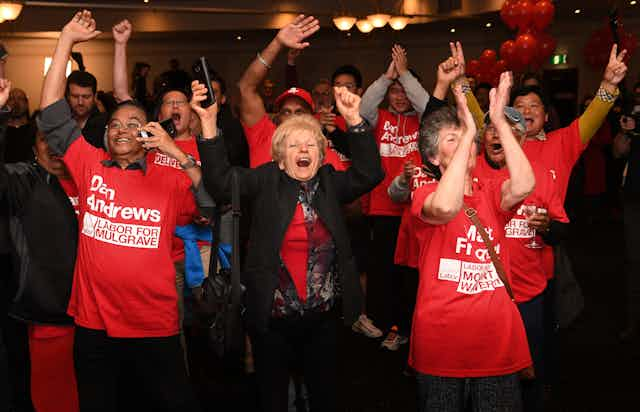With 42% of enrolled voters counted in the Victorian election, the ALP has had an emphatic win. So far, the ABC has called 58 of the 88 seats for Labor, just 20 for the Coalition, one Green, two Independents and seven seats are undecided. Projected primary votes are currently 43.7% Labor (up 5.7% since the 2014 election), 34.9% Coalition (down 7.0%) and 10.5% Greens (down 1.0%). These projections are of what the final vote will be.
There was a large amount of pre-poll voting at this election, and perhaps the pre-poll swing to Labor is lower than the election-day swing. Pre-poll votes will be counted later in the night. However, Labor has clearly won a thumping victory.
I believe the Liberals law and order campaign was too right-wing for Victoria. The Liberals suffered large swings in their eastern suburb heartland seats such as Hawthorn, Sandringham and Box Hill. In these seats, voters with high levels of educational attainment would have been angered by the Liberals’ campaign, which could have been perceived as racist.
In the final pre-election Newspoll, Labor led the Liberals by 43-42 on handling the economy, a decline from a 45-37 lead in late October. However, the economy is traditionally a Liberal strength. The Victorian economy is good, and this undoubtedly helped Labor in its rout.
Labor had the advantage of being a first-term government with an unpopular federal Coalition government. The ousting of Malcolm Turnbull would not have gone down well among voters with high levels of educational attainment, and contributed to the swings against the Liberals.
The final four Victorian state polls had Labor’s two party vote between 53% and 54%, which would represent merely a 1 to 2% swing to Labor from the 2014 election. While we will not know the final two party result for at least two weeks, Labor has clearly performed far better than expected. Polls sometimes miss in the direction that surprises commentators.
For example, Trump’s US victory in 2016, the UK’s Brexit referendum in 2016, UK Labour’s forcing the Conservatives into a hung Parliament in 2017, and Emmanuel Macron’s blowout victory over Marine Le Pen in 2017 were all occasions where the polls missed in a way contrary to how conventional wisdom thought.
I will have more details tomorrow on the Victorian election including what happened in the upper house.

